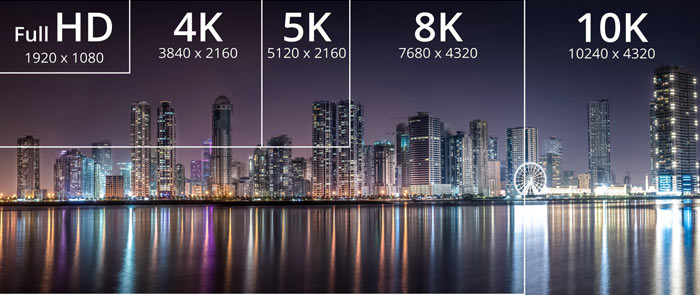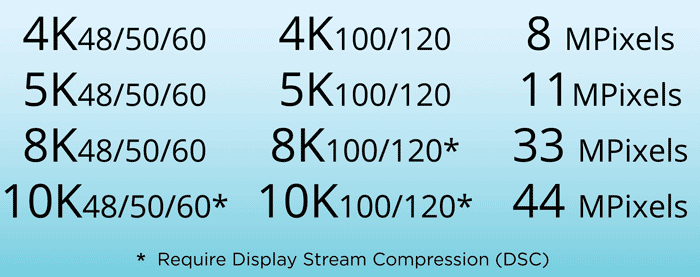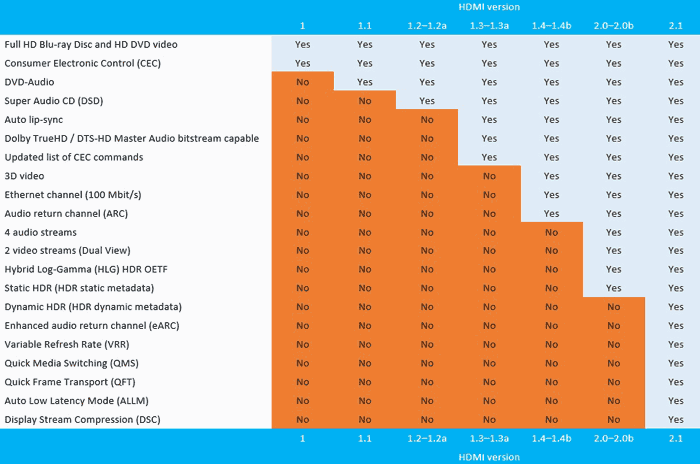The HDMI Forum has published its latest HDMI v2.1 specification. The new spec will be available to all vendors who have adopted HDMI 2.0 and is backwards compatible with previous HDMI versions. The key enhancements delivered by HDMI 2.1 include higher resolutions and refresh rates - for example 8K60 and 4K120, and resolutions up to 10K. Another important change that could pay dividends in image quality is the support for Dynamic HDR, and support for VRR when gaming.

All the above listed niceties are enabled by the HDMI v2.1's increase in bandwidth - supporting up to 48Gbps. That allows for more/faster pixel rates - just look at the difference in Full HD and 10K screens in the comparison above, for example. While the faster refresh rates are delivered to consumer TVs (8K60Hz and 4K120Hz) the HDMI Forum says that the 10K resolution is "supported for commercial AV, and industrial and specialty usages".

Perhaps just as pleasing to your peepers as the higher resolutions and refresh rates is the delivery of Dynamic HDR to compatible TV screens. In its explanation of this technology the HDMI Forum says "Dynamic HDR support ensures every moment of a video is displayed at its ideal values for depth, detail, brightness, contrast and wider colour gamuts—on a scene-by-scene or even a frame-by-frame basis".

A new cable is required for the uncompressed 48Gbps bandwidth to be delivered. Users will have to equip a new Ultra High Speed HDMI Cable, ensuring that uncompressed 8K video with HDR can be transferred, designed with exceptionally low EMI (electro-magnetic interference) properties. This new cable is backwards compatible with your existing installed base of HDMI devices.
Variable Refresh Rate gaming
If you are a gamer you might appreciate HDMI 2.1 includes Variable Refresh Rate (VRR) technology to reduce or eliminate lag, stutter and frame tearing. Furthermore, Quick Frame Transport (QFT) reduces latency for smoother no-lag gaming, and real-time interactive virtual reality. The HDMI Forum has also minimised the blank screens when switching sources with its Quick Media Switching (QMS) for movies and video. Lastly, Auto Low Latency Mode (ALLM) is a feature that sets the ideal latency for smooth, lag-free viewing.

The HDMI Forum has put together the above handy chart showing the generational differences and advances between HDMI versions.







